
How to Use adaptor 12v: Examples, Pinouts, and Specs
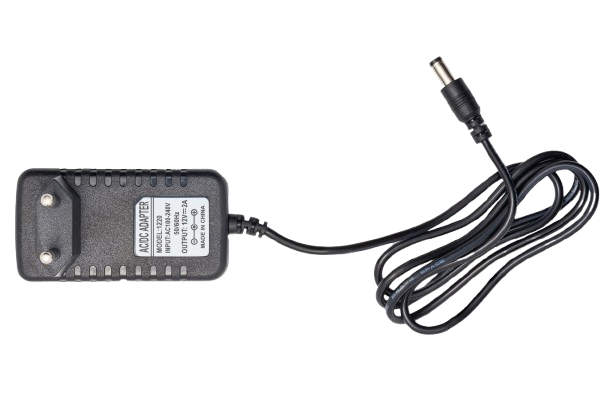
 Design with adaptor 12v in Cirkit Designer
Design with adaptor 12v in Cirkit DesignerIntroduction
The Adaptor 12V by Power (Manufacturer Part ID: Power) is a versatile device designed to convert electrical power from a standard wall outlet (typically 110V or 220V AC) to a stable 12V DC output. This adaptor is commonly used to power a wide range of electronic devices, including routers, LED strips, small appliances, and DIY electronics projects.
Explore Projects Built with adaptor 12v
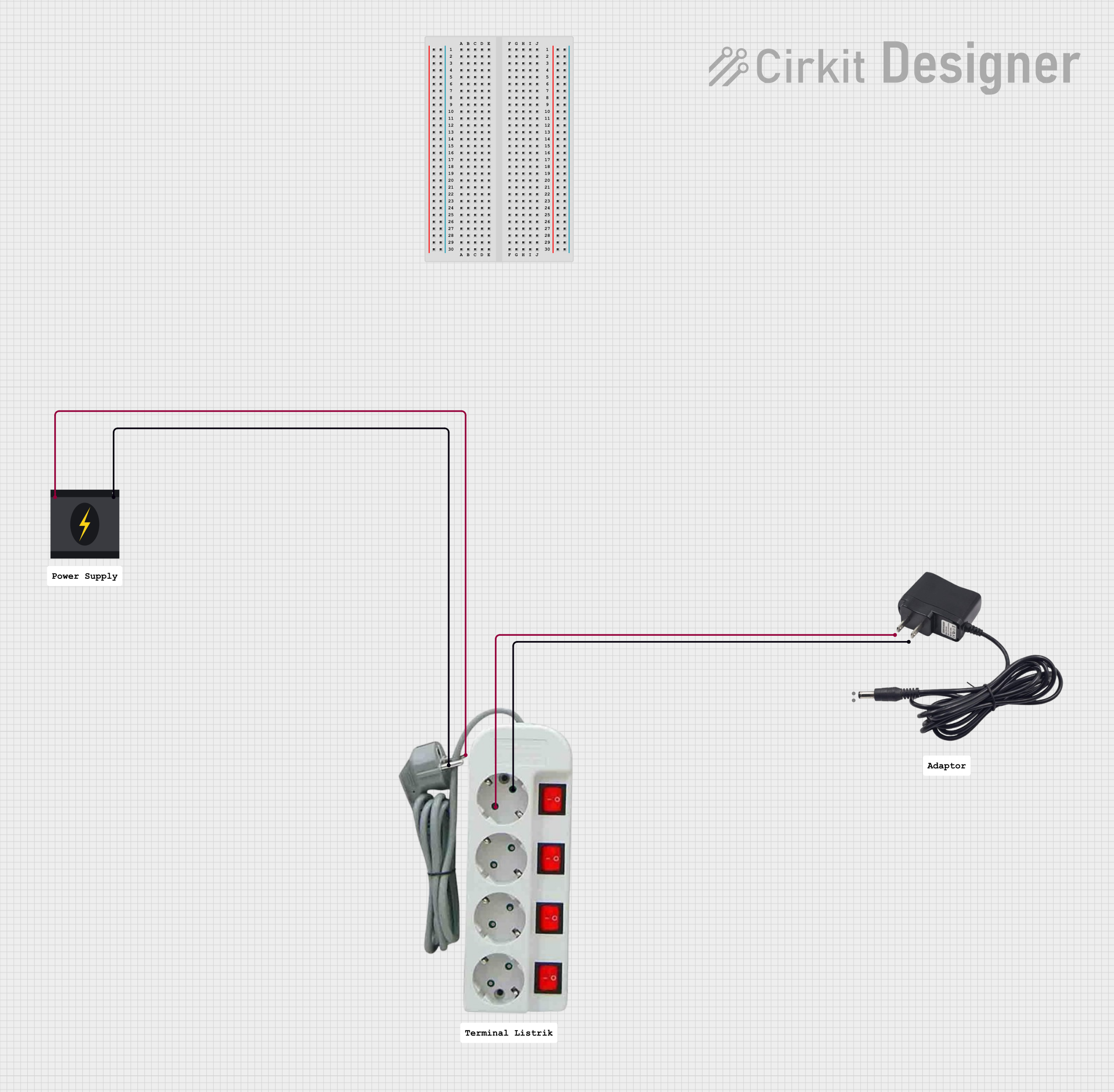
 Open Project in Cirkit Designer
Open Project in Cirkit Designer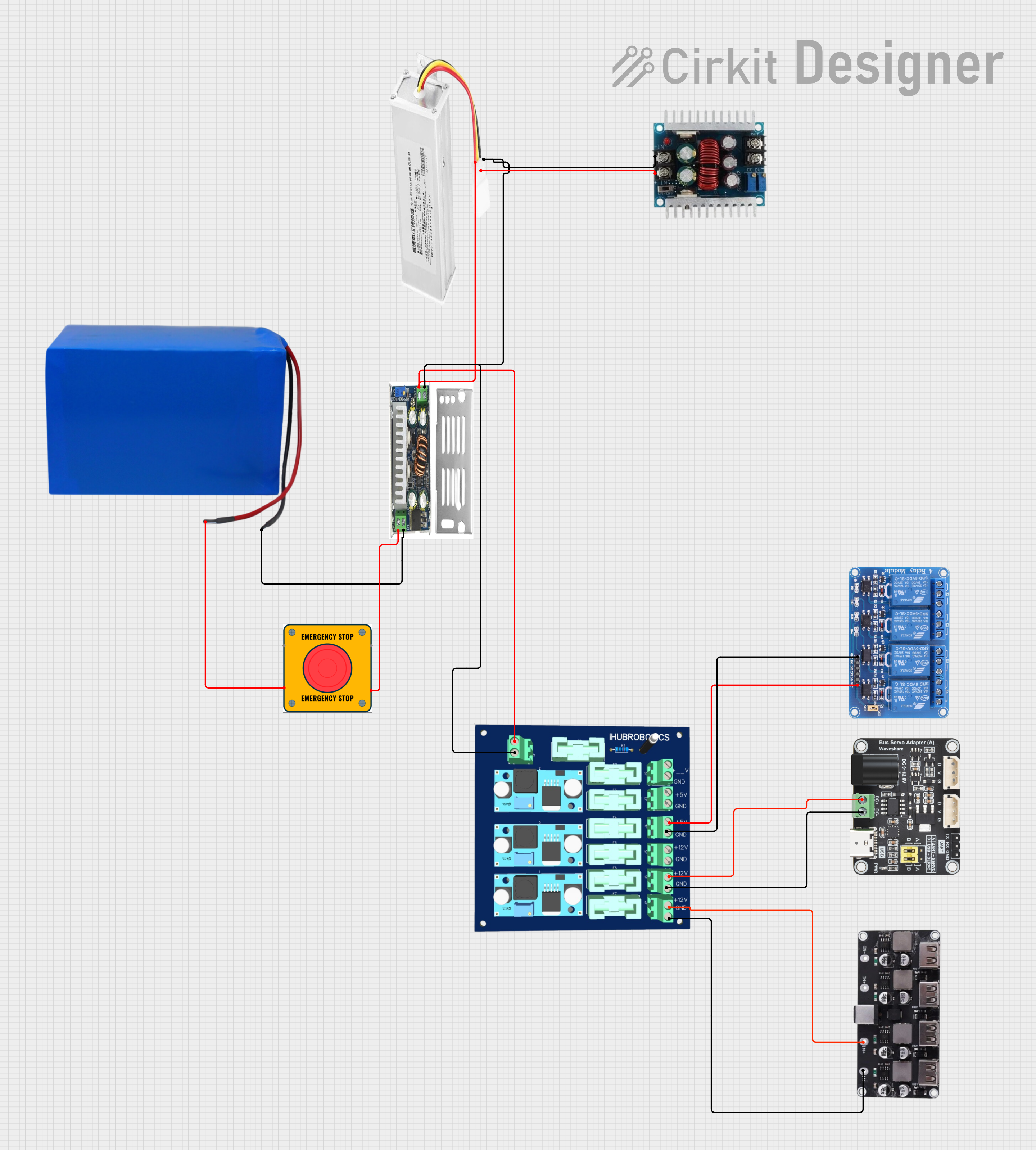
 Open Project in Cirkit Designer
Open Project in Cirkit Designer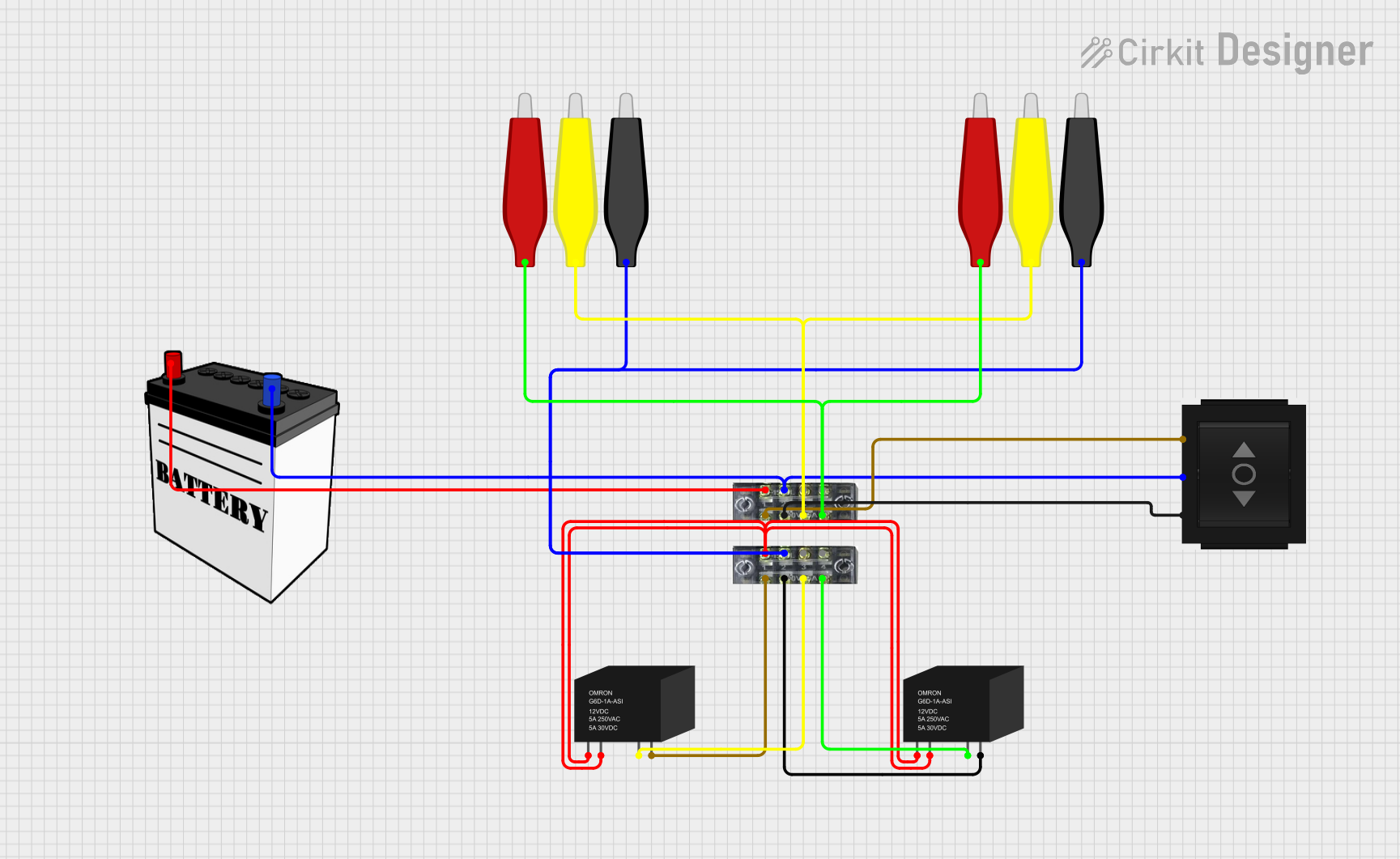
 Open Project in Cirkit Designer
Open Project in Cirkit Designer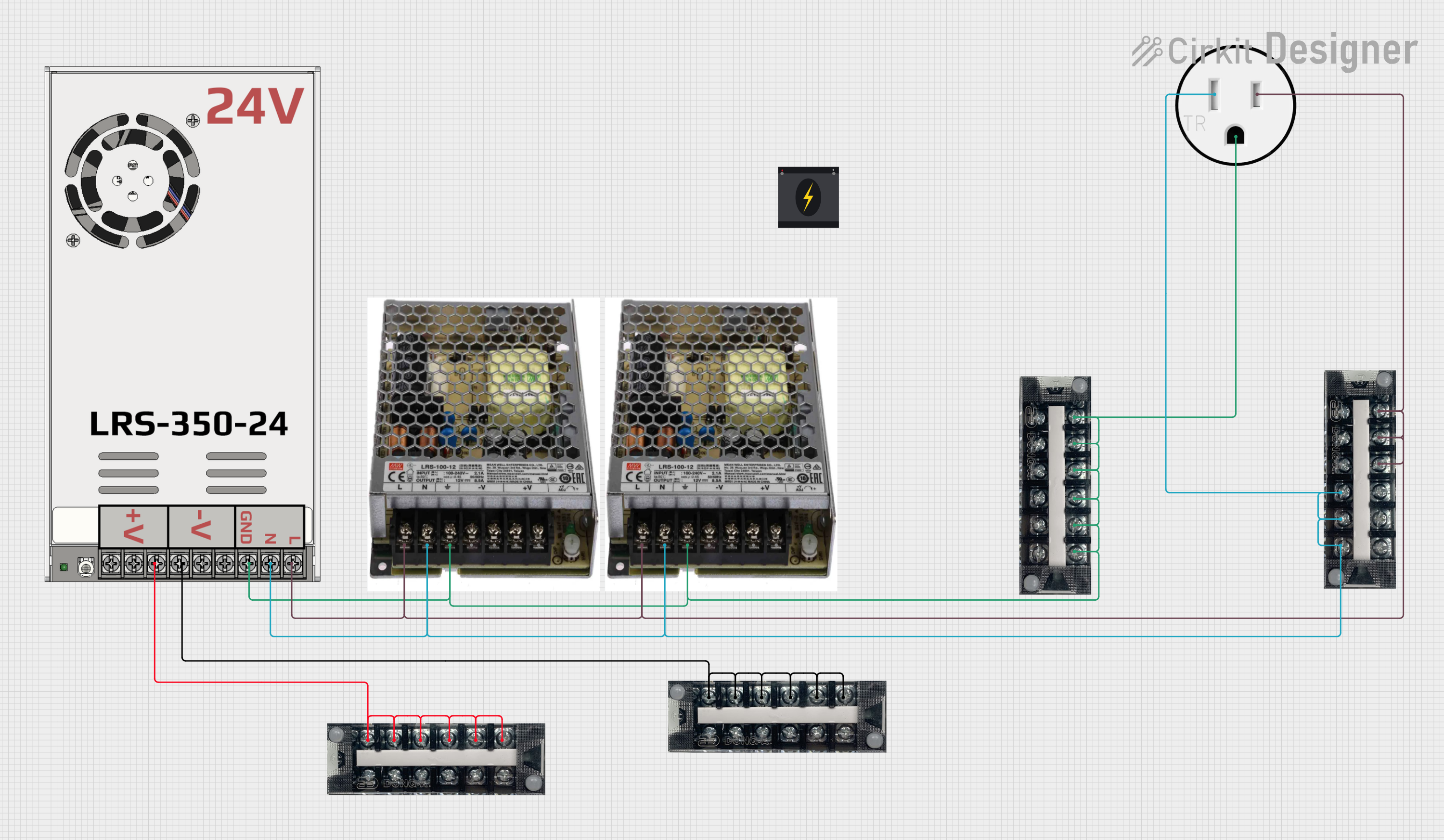
 Open Project in Cirkit Designer
Open Project in Cirkit DesignerExplore Projects Built with adaptor 12v

 Open Project in Cirkit Designer
Open Project in Cirkit Designer
 Open Project in Cirkit Designer
Open Project in Cirkit Designer
 Open Project in Cirkit Designer
Open Project in Cirkit Designer
 Open Project in Cirkit Designer
Open Project in Cirkit DesignerCommon Applications and Use Cases
- Powering home networking equipment such as routers and modems.
- Supplying power to LED lighting systems.
- Driving small DC motors or actuators in hobbyist projects.
- Providing a stable power source for Arduino, Raspberry Pi, or other microcontroller-based systems.
- Charging or powering portable devices that require a 12V DC input.
Technical Specifications
The following table outlines the key technical details of the Adaptor 12V:
| Parameter | Specification |
|---|---|
| Input Voltage | 100-240V AC, 50/60Hz |
| Output Voltage | 12V DC |
| Output Current | 1A, 2A, or 5A (varies by model) |
| Power Rating | Up to 60W (depending on model) |
| Connector Type | Barrel Jack (5.5mm outer, 2.1mm inner) |
| Efficiency | ≥ 85% |
| Operating Temperature | 0°C to 40°C |
| Storage Temperature | -20°C to 70°C |
| Safety Certifications | CE, FCC, RoHS |
Pin Configuration and Descriptions
The Adaptor 12V typically uses a barrel jack connector. The pin configuration is as follows:
| Pin | Description |
|---|---|
| Outer | Ground (GND) |
| Inner | Positive Voltage (+12V) |
Ensure that the polarity of the barrel jack matches the requirements of your device to avoid damage.
Usage Instructions
How to Use the Adaptor in a Circuit
- Verify Compatibility: Ensure the device you are powering requires a 12V DC input and that the current rating of the adaptor meets or exceeds the device's requirements.
- Connect the Adaptor: Plug the barrel jack into the power input port of your device. Ensure a snug and secure connection.
- Power On: Plug the adaptor into a wall outlet. The device should power on immediately if the connection is correct.
- Monitor Operation: Check for any signs of overheating or malfunction. If the device does not power on, double-check the polarity and connections.
Important Considerations and Best Practices
- Polarity Check: Always confirm the polarity of the barrel jack matches your device's input requirements. Reversed polarity can damage sensitive electronics.
- Current Rating: Do not exceed the adaptor's maximum current rating. For example, if the adaptor is rated for 2A, ensure the connected device does not draw more than 2A.
- Ventilation: Place the adaptor in a well-ventilated area to prevent overheating.
- Surge Protection: Use a surge protector to safeguard the adaptor and connected devices from voltage spikes.
Example: Using the Adaptor with an Arduino UNO
The Adaptor 12V can be used to power an Arduino UNO via its DC barrel jack. Below is an example of how to connect and use it:
- Plug the adaptor's barrel jack into the Arduino UNO's power input port.
- Ensure the adaptor's output is 12V DC and the current rating is at least 1A.
- Plug the adaptor into a wall outlet to power the Arduino UNO.
Here is a simple Arduino sketch to blink an LED while powered by the adaptor:
// This sketch blinks an LED connected to pin 13 of the Arduino UNO.
// Ensure the Arduino is powered by the 12V adaptor.
void setup() {
pinMode(13, OUTPUT); // Set pin 13 as an output pin
}
void loop() {
digitalWrite(13, HIGH); // Turn the LED on
delay(1000); // Wait for 1 second
digitalWrite(13, LOW); // Turn the LED off
delay(1000); // Wait for 1 second
}
Troubleshooting and FAQs
Common Issues and Solutions
| Issue | Possible Cause | Solution |
|---|---|---|
| Device does not power on | Incorrect polarity or loose connection | Verify the polarity and ensure a secure connection. |
| Adaptor overheats | Overloaded (device draws too much current) | Use an adaptor with a higher current rating. |
| Intermittent power or flickering | Faulty barrel jack or loose connection | Check the barrel jack and replace if necessary. |
| No output voltage | Faulty adaptor or blown internal fuse | Replace the adaptor with a new one. |
FAQs
Can I use this adaptor with a device that requires less than 12V?
- No, using a 12V adaptor with a device that requires a lower voltage can damage the device. Use an adaptor with the correct voltage rating.
What happens if I exceed the current rating of the adaptor?
- The adaptor may overheat, shut down, or fail permanently. Always ensure the connected device's current draw is within the adaptor's rated capacity.
Is this adaptor suitable for outdoor use?
- No, this adaptor is designed for indoor use only. Exposure to moisture or extreme temperatures can damage the adaptor.
Can I use this adaptor to charge a 12V battery?
- This adaptor is not designed for charging batteries. Use a dedicated battery charger for this purpose.
By following these guidelines and best practices, you can ensure safe and reliable operation of the Adaptor 12V in your projects and devices.